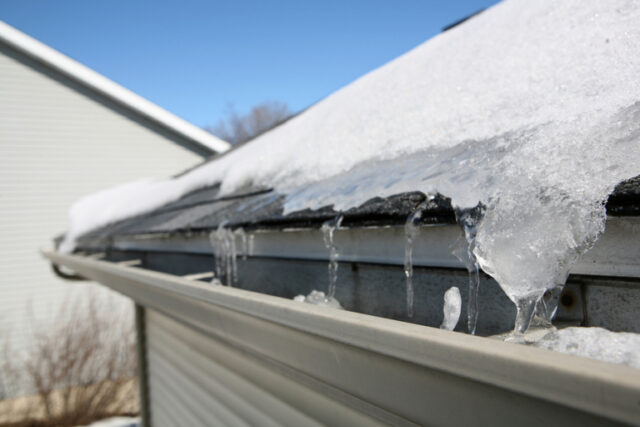Creating the proper airflow paired with insulation within your attic is essential to prevent costly repairs down the road.
1.) Prevent Trapped Moisture
Creating a clear pattern for proper airflow prevents air from entering your home and staying there. The trapped air and moisture will eventually cause rot, mold and decay in your attic and roof causing a need for repairs much sooner than anticipated. Buckling of your roof deck can cause leaks, unsightly shingle lifting and compromises the structural integrity of your home.

2.) Adhere to Building Code Requirements
Typically, building code requires at least 1 square foot of net free vent area for every 150 square feet of attic space but this may vary depending on your location. Net free area is the total amount of unobstructed area where air can flow freely. When modifying your home, always check with your local state and town regulations and requirements for correct protocol for your area and environmental factors. A home in New England isn’t going to have the same building code requirements as a home in Florida due to environmental differences.
3.) Avoid Winter Ice Dams
If you’re in a climate prone to freezing in the Winter months, proper attic ventilation can aid in the prevention of ice dams. Ice dams form when heat from your home escapes and melts snow and ice on your roof. The melted moisture refreezes causing roof and gutter damage. Keeping the air temperature inside the attic closer to the outside temperature will help to counteract the formation of ice dams.

4.) Promote Energy Efficiency
Proper airflow and insulation inside your attic helps to keep the heating and cooling of your home more energy efficient. Lower heating and cooling costs is a byproduct of setting your ventilation system up correctly in the first place. There’s a difference between ventilation and air leaks in your home. Proper insulation is important around penetrations to eliminate air leaks. Eliminating air leaks will create a better airflow and keep your home more energy efficient.
5.) Prevent An Airflow Traffic Jam
There’s such a thing as too much ventilation. It’s a counterintuitive concept but this means the airflow can get “confused” in a sense and will stay stagnant without a clear path to flow. Creating a streamlined flow of air is the most important aspect when designing your ventilation system. An experienced contractor will guide you to make the best recommendations. You can also simply enter your dimensions or square footage of your attic for an informed recommendation from Owens Corning: https://www.owenscorning.com/en-us/roofing/components/vent-calculator
To read more of Seaberg Construction’s blog, click here!

